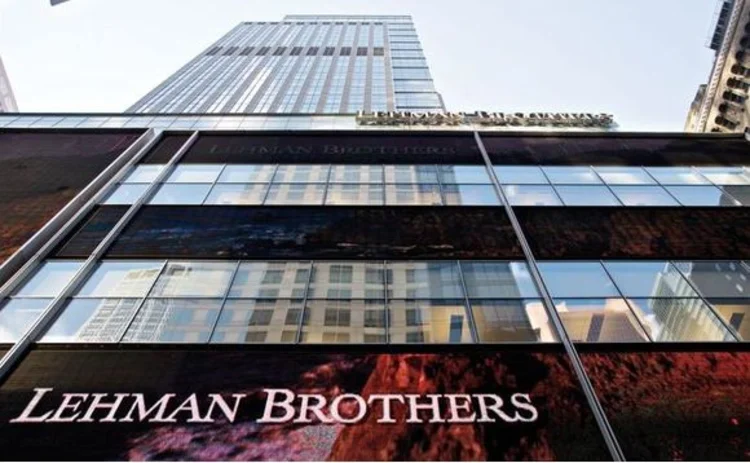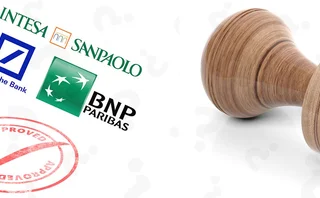
PwC sets timetable for returning Lehman trust assets

PricewaterhouseCoopers (PwC), the administrators for Lehman Brothers International (Europe) (LBIE), has begun to roll out a consensual agreement to return trust assets to secured creditors. If the support of around 90% of creditors can be gained by December 29, PwC will begin returning assets in the first quarter of 2010.
"We are going to offer a bilateral compromised proposal to creditors, which is effectively a consensual version of the original scheme of arrangement. If we get a suitable majority signing up to this, we should be able to start returning trust assets to creditors via this mechanism in the first quarter of 2010, which would be terrific," Steven Pearson, joint administrator of LBIE and partner at PwC, told Risk.
PwC originally put forward a formal scheme of arrangement to expedite the return of trust assets to clients of LBIE, a London-based broker-dealer subsidiary of Lehman Brothers, but the Royal Courts of Justice decided in August it had no jurisdiction under part 26 of the Companies Act 2006 to sanction it. The scheme would have required the approval of 75% of creditors by asset value in order to legally bind all claimants to it. Consequently, the scheme was viewed as compromising the proprietary rights of creditors.
The Court of Appeal failed to overturn the ruling on November 9. However, the administrators were prepared for such an outcome, and began rolling out the Claim Resolution Agreement (CRA) - effectively a consensual version of the scheme - on November 23. PwC is aiming to meet US trust claimants during the first two weeks of December to explain the CRA - which approaches 400 pages in length - and garner support for it. Claimants will be expected to sign up by December 29 and any client who signs up afterwards will incur incremental fees as a result. Nonetheless, Pearson says the CRA will only go ahead if it attracts a high level of support.
"We are going to give priority to claimants who sign up to the CRA in terms of the speed with which we return their assets. However, if we don't get 90% of clients by value across the globe supporting this, we're unlikely to run with it. Everyone is making little compromises with the CRA, but as long as you make little compromises, no-one has to make a big one," he says.
PwC indicates client reaction to the CRA has been favourable so far. And while Pearson concedes it is inevitable some secured creditors will opt out of the CRA, he says none has done so yet.
Other issues remain however. Unlike the original scheme of arrangement, the CRA cannot impose a bar date on secured claims against the estate. There is also the challenge of procuring assets tied up in the administartion of Lehman Brothers Inc (LBI), the US broker-dealer arm of Lehman Brothers, which holds around 40%, or $6 billion, of the trust assets still to be returned to LBIE creditors.
Pearson acknowledges interaction with LBI has complicated the return of assets. Due to differences between English and US bankruptcy law, LBI has an entirely different process for returning assets to creditors - although Pearson stresses he maintains a good dialogue with the US administrators.
With regard to bar dates, Justice Blackburne stated in his August judgement on the scheme of approval that the UK courts would be able to aid the administrators in setting a deadline for claims. Pearson says the bar date for claims on trust assets will be February 26, 2010. While this will relieve the administrators of liability in the event more creditors emerge from the woodwork, claimants who have already received trust assets will not be indemnified from legal action.
"Do I think that is going to be a real risk? No, not really. The only uncertainty arises from the period immediately post-administration, when all sorts of trades should have settled but didn't, or did settle but shouldn't have, so some bits have ended up in the wrong place. But in general, the LBIE records are pretty good, so we know who owned what," says Pearson.
Only users who have a paid subscription or are part of a corporate subscription are able to print or copy content.
To access these options, along with all other subscription benefits, please contact info@risk.net or view our subscription options here: http://subscriptions.risk.net/subscribe
You are currently unable to print this content. Please contact info@risk.net to find out more.
You are currently unable to copy this content. Please contact info@risk.net to find out more.
Copyright Infopro Digital Limited. All rights reserved.
You may share this content using our article tools. Printing this content is for the sole use of the Authorised User (named subscriber), as outlined in our terms and conditions - https://www.infopro-insight.com/terms-conditions/insight-subscriptions/
If you would like to purchase additional rights please email info@risk.net
Copyright Infopro Digital Limited. All rights reserved.
You may share this content using our article tools. Copying this content is for the sole use of the Authorised User (named subscriber), as outlined in our terms and conditions - https://www.infopro-insight.com/terms-conditions/insight-subscriptions/
If you would like to purchase additional rights please email info@risk.net
More on Risk management
Falling T2 balances bode well for eurozone’s stability
Impact of fragmentation would be less severe today than in 2010s, says Marcello Minenna
For a growing number of banks, synthetics are the real deal
More lenders want to use SRTs to offload credit risk, but old hands say they have a long road ahead
Did Fed’s stress capital buffer blunt CCAR?
Experts fear flagship test’s use as a capital top-up has undermined its role in risk management
How Ally found the key to GenAI at the bottom of a teacup
Risk-and-tech chemistry – plus Microsoft’s flexibility – has seen US lender leap from experiments to execution
Industry urges focus on initial margin instead of intraday VM
CPMI-Iosco says scheduled variation margin is better than ad hoc calls by clearing houses
Consortium backs BGC’s effort to challenge CME
Banks and market-makers – including BofA, Citi, Goldman, Jump and Tower – will have a 26% stake in FMX
Revealed: the three EU banks applying for IMA approval
BNP Paribas, Deutsche Bank and Intesa Sanpaolo ask ECB to use internal models for FRTB
FICC takes flak over Treasury clearing proposal
Latest plans would still allow members to bundle clearing and execution – and would fail to boost clearing capacity, critics say
Most read
- For a growing number of banks, synthetics are the real deal
- Podcast: Olivier Daviaud on P&L attribution for options
- Industry urges focus on initial margin instead of intraday VM







